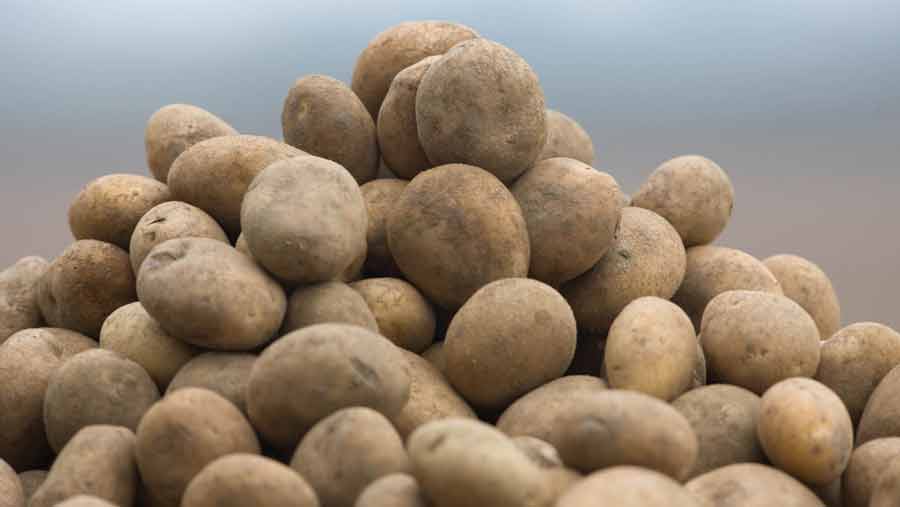Outlook 2024: Drop in potato area key to stabilise markets
 © Tim Scrivener
© Tim Scrivener The current trend in pricing may tempt some growers to increase their area for 2024, following this season’s predicted national reduction of 10-15%, says Andersons director Nick Blake.
Indications from Europe are of an increase in ware plantings in 2023, in contrast to the UK, and a reduced seed area.
Along with challenging UK seed lifting conditions this autumn, this could limit ware production for 2024.
See also: UK feed wheat nears £180/t with potential gains in new year
Potato market summary
- Challenging lifting conditions for seed crops in UK and lower European area could limit ware production in 2024
- Sustained drop in area needed to stabilise markets in long term
- Direct grower-buyer relationships could benefit both parties
- Growers and land providers should consider collaboration to maximise opportunities with
SFI and carbon markets
However, as has been written for many years in Outlook, a sustained drop in area is required to stabilise the market in the long term.
Statistics prove that the usual reaction to increase area on the back of a high-price year, while understandable in the past, has ultimately proven detrimental to all growers.
A significant increase in costs for 2024 is likely to be the effect of interest rates on working capital, including machinery finance, which is likely to cost 17-20% more than before the interest rate rises.
Conversely, there have been reductions in fuel and fertiliser costs.
Cost of production
At the time of writing, it was too early to comment on overall changes in cost of production.
Whatever the cost outcome, grower sentiment appears to imply a price increase is required to reflect the increasing risk of growing potatoes.
The wet autumn and winter so far will have further dented that commitment.
The adversarial approach to crop procurement is destructive in a sector with high capital employed and high weather risk.
This season’s area reduction is anecdotally focused on the packing area, with growers no longer willing to shoulder the burden of risk.
The structure of the industry needs to develop, with an increase in direct relationships. Hopefully, this should emerge as the sector consolidates further.
More collaboration between the land provider and the grower is also likely to be needed following the introduction of the Sustainable Farming Incentive and the development of carbon markets, to help cement longer-term relationships to maximise opportunities.
Growers require productive, pest-free land for crops and have to account for the significant investment by land providers related to infrastructure, whether this be storage or irrigation.
Conversely, land providers also have to appreciate the pressures experienced by growers and the constraints related to falling Basic Payment Scheme receipts.
Finding the right balance of returns to ensure a healthy production platform is key. This will require a positive attitude to change on both sides.
